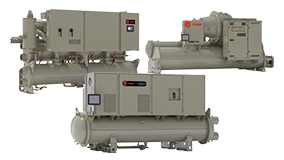CAPEX Reductions Today Could Lay the Foundation for a Price Spike
November 21, 2016
The oil and gas price collapse has discouraged investments in future production in recent months and is setting up a potential spike in prices. The industry is caught in an underinvestment cycle that could reverberate much sooner than most realize. CAPEX budgets are being slashed as profits continue to fall. ExxonMobil, the largest U.S. energy company, illustrates the dramatic reversal of fortune. The major enjoyed a $45 billion net income profit in 2012, but had just a $5 billion gain for the first three quarters of 2016.
The general conclusion is that oil prices need to return to over $60 per barrel for most new investments to materialize. Yet, on November 8, EIA projected a price of $49.91 per barrel for WTI for 2017, a 3.2% drop from its August forecast. Brent’s forecast similarly fell 1.3% to $51.58 per barrel.
Wood Mackenzie reports that some $380 billion in oil and gas projects were cancelled from 2014 to early 2016. Last year, nearly 70 major projects were scrapped, constituting 27 billion barrels worth of potential production. After five straight years of increases, global upstream oil and gas investment declined 20% in 2015 as average yearly oil prices were almost halved to $50 per barrel.
Indeed, as an international commodity where prices are connected, delays and cancelations around the world are most relevant for the petroleum market. Some $1 trillion in projects aimed at finding and pumping oil have now been delayed through 2020, leaving 7 billion barrels stuck in the ground. The deepest spending cuts are in the U.S., where projected capital investment has halved, falling by $125 billion over the 2016 and 2017 period.
Other key cancellations are in the deepwater drilling fields, increasingly important areas because they compensate for their higher development costs with larger yields. Numerous projects in the Gulf of Mexico and offshore West Africa, for instance, will now be deferred until the 2020s. For Canada’s costly oil sands, expected to deliver 30% of incremental North American oil supply, investment plummeted over 60% ($50 billion) from 2014 to early-2016. The U.S. spending cuts in particular are very telling because the country’s majors have the resources to persevere. This year, ExxonMobil plans a CAPEX cut of 25% and Chevron’s spending is already down 32%.
This investment drop is the basis of lowering expectations for U.S. crude production. EIA now forecasts that U.S. crude output will decline 1.2% to 8.73 million b/d in 2017, a 7.3% fall from 2015, which was the highest production level since 1972. The good news is that U.S. oil companies have implemented cost-saving measures to weather the downturn, becoming leaner and more efficient with lower breakeven prices – an upside for them that Saudi Arabia didn’t foresee when it decided to flood the world oil market.
Looking longer-term, the sector continues to depend on large-scale, high-cost capital assets, confirming that investment decisions today have long-term implications. Deepwater assets, for instance, can take a decade to come online. Project delays can build in future cycles of market tightness and volatility. Requirements in oil investment grow over time, reflecting ever-growing consumption. For example, in 2011, the International Energy Agency pegged annual global oil supply needs in upstream, transport, and refining at $420 billion, but this has now surged to $620 billion, with about 85% in the highly capital-intensive upstream sector.
A 50% increase in required annual oil investment over the past five years isn’t a surprise: global oil demand has increased 10% to a whopping 170 million gallons devoured every hour. After all, oil has no large-scale substitute, and the world this year will add nearly 90 million new oil-reliant cars and light trucks. The CAPEX now being pushed to the sidelines is ticking.





































































































